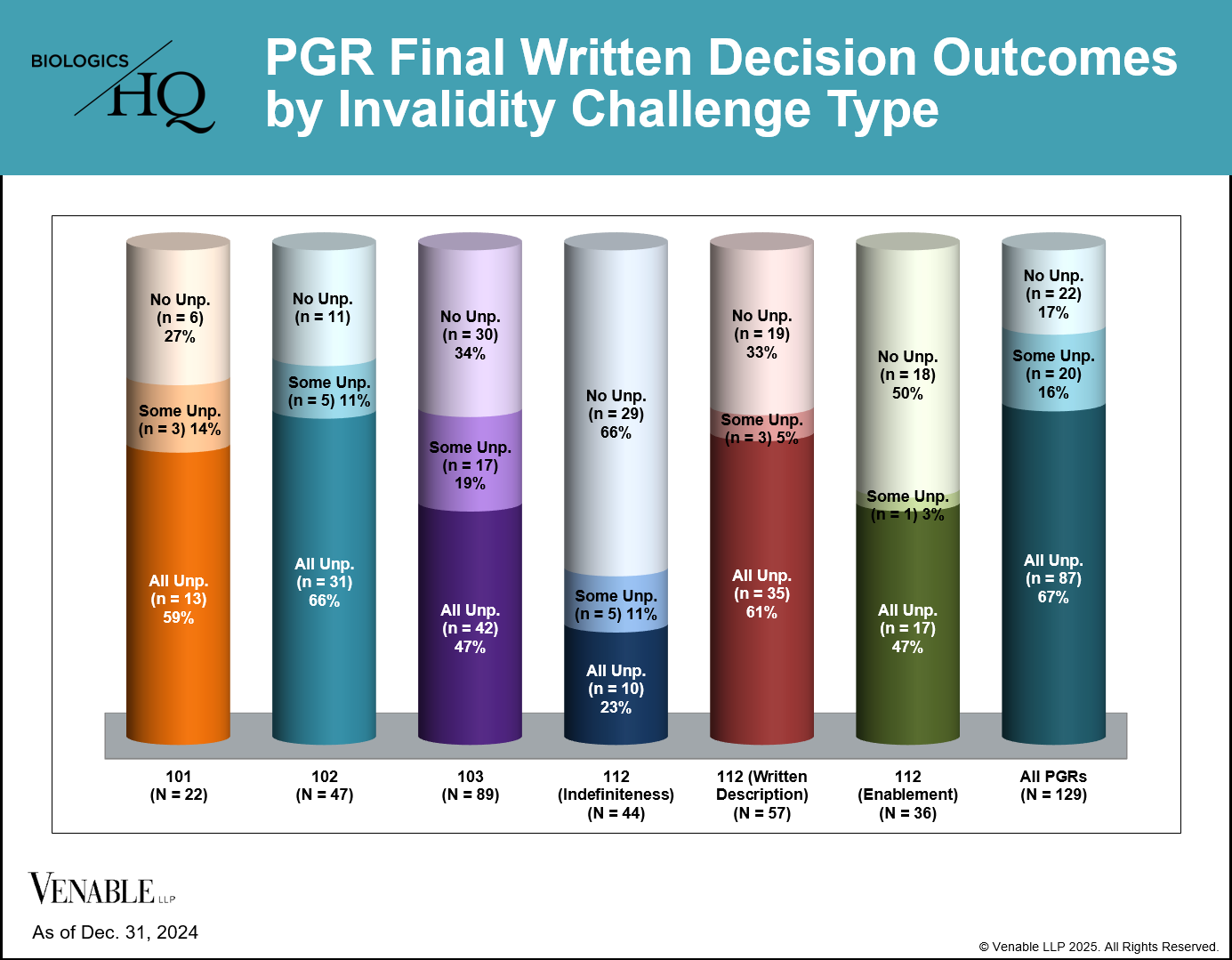
This figure shows PGR FWD outcomes by invalidity challenge type under §§ 101, 102, 103, and 112 (indefiniteness, written description, and enablement). Where there were multiple challenge types in a petition each was reviewed separately. Infrequently raised challenges such as improper narrowing of dependent claims, ornamentality and double-patenting were not included in this analysis due to the limited data available for those challenges. Because claims are often challenged under multiple grounds, they are sometimes found not unpatentable under one ground but are invalidated under another ground.
BiologicsHQ and materials published on BiologicsHQ are published for informational purposes only. Neither the information nor any opinion expressed on BiologicsHQ constitute legal advice, create an attorney-client relationship, or constitute a solicitation for business.

